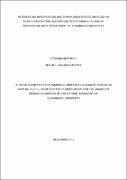| dc.description.abstract | The purpose of the study was to integrate ICT in the teaching and learning of music to enhance competence in music composition and production at the department of Performing Arts in Kyambogo University. The objectives of the study were to: i) create availability of adequate ICT equipment in the music department; ii) demonstrate to students the use of ICT in Music composition and production; and iii) evaluate the implemented use of ICT in the teaching and learning of music composition and production. In this research a methodology involving a qualitative approach was employed. Under this approach the following methods, namely: work process analysis, future workshop, interview and observation were utilized to collect data by way of analyzing the situation at the department. This analysis, revealed that there was inadequate utilization of ICT in the music education at the department due to inadequate funds for ICT infrastructural development. This, the stakeholders noted, would negatively affect the competencies and competitiveness of the graduates in the labour market. During Future Workshop sessions the stakeholders agreed upon a work plan of interventions that would address this problem. The plan involved: securing a room for the music studio, installing ICT Music software on both the departmental and students private gadgets, getting access to other university computer laboratories, consulting reference music books from the main University library, producing handouts, getting more computers, installing internet, and finally, revising departmental time table to include music composition and production course for undergraduate programs. This plan was wholly implemented. It enlisted very encouraging positive results; though with some shortcomings. The evaluation of the implemented plan revealed the following. The students mostly learned Finale note pad and Fruity loops Studio software(60%). The course was highly relevant to students. The biggest percentage (60%) of the students overwhelmingly appreciated the course. Thirty percent (30%) of the students were fully confident of the acquired the knowledge and skill from the course. Conclusion: There should be ideal digitalized music composition and production equipment. Recommendations: The number of computers should be increased to achieve a student computer ratio (SCR) of 5:1. Secondly, is a need to establish a music studio, thirdly, is a need to increase the number of music instructors. Finally, there is a need to review the syllabi to include ICT in Music education in all programs in the department. | en_US |

